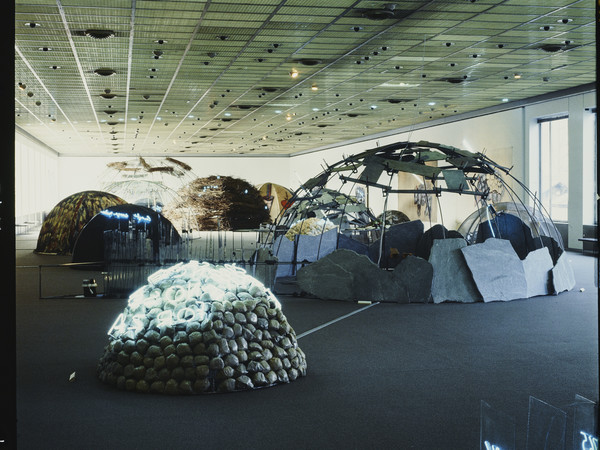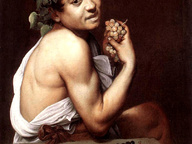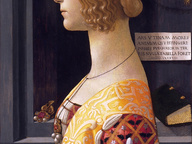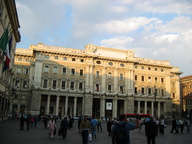Mario Merz. Igloos

© Getty Research Institute, Los Angeles / Ph. Balthasar Burkhardt | Mario Merz, Veduta della mostra, Kunsthaus Zürich, 1985
From 24 Ottobre 2018 to 24 Febbraio 2019
Milan
Place: Pirelli HangarBicocca
Address: via Chiese 2
Times: Thursday to Sunday 10am–10pm
Responsibles: Vicente Todolí
Organizers:
- In collaborazione con Fondazione Merz
Telefono per informazioni: +39 02 66 11 15 73
E-Mail info: info@hangarbicocca.org
Official site: http://www.hangarbicocca.org
Pirelli HangarBicocca presents “Igloos” (25 October 2018 – 24 February 2019), a show by Mario Merz (Milan, 1925–2003), bringing together his most iconic group of works: theIgloos, dating from 1968 until the end of his life.
Curated by Vicente Todolí, Artistic Director of Pirelli HangarBicocca and realised in collaboration with Fondazione Merz, the exhibition spans the whole 5,500 square metres of the Navate and the Cubo of Pirelli HangarBicocca, placing the visitor at the heart of a constellation of over 30 large-scale works in the shape of an igloo: an unprecedented landscape of great visual impact.
Fifty years since the creation of the first igloo, the exhibition provides an overview of MarioMerz’s work, of its historical importance and great innovative reach. Gathered from numerousprivate collections and international museums, including the Museo Nacional Centro de Arte Reina Sofía in Madrid, the Tate Modern in London, the Hamburger Bahnhof in Berlin and the Van Abbemuseum in Eindhoven, the ‘igloos’ will be displayed together in such a large number for the first time.
Vicente Todolí said, “As its starting point, the exhibition ‘Igloos’ takes Mario Merz’s solo showcurated by Harald Szeemann in 1985 at the Kunsthaus in Zurich, where all the types of igloosproduced up until that point were brought together to be arranged ‘as a village, a town, a ‘Città irreale’ in the large exhibition hall,’ as Szeemann states. Our exhibition at Pirelli HangarBicocca will be a once-in-a-generation opportunity to re-live that experience (but expanded from 12 to more than 30 igloos) created by one of the most important artists of the post-war generation.”
The Milan project builds on Szeemann and Merz’s intention, highlighting how the artist continued to develop his igloo imagery with coherence and vision. The exhibition in fact also includes works conceived over the following decades, on the occasion of his major anthological and retrospective shows in the leading museums in Europe and around the world. The show opens with La Goccia d’Acqua, 1987, twelve meters in diameter, it is the largest igloo ever produced by Merz for an internal exhibition space, and was conceived on the occasion of his solo show at the CAPC musée d'art contemporain de Bordeaux.
In the space of the Navate, the exhibition itinerary unfolds through sets displayed in chronological order, starting from the first igloos conceived in the ’60s such as, to name but a few: Igloo di Giap, 1968, and Acqua scivola, 1969. Among those of the ’70s, Igloo di Marisa,1972 and ‘If the hoar frost grip thy tent Thou wilt give thanks when night is spent’ (EzraPund), 1978 are featured here. The evolutions of the ’80s, the period in which the igloos become more complex, doubling, tripling or intersecting, are represented by works such as:Igloo del Palacio de las Alhajas, 1982 and Chiaro Oscuro, 1983. Representative of the ’90s is the Senza titolo, 1999, created for the museum park on the occasion of the solo show at the Fundação de Serralves, also curated by Vicente Todolí.
Through this group of works, the exhibition reveals the most innovative aspects and themes of Merz’s research, inserting it within the international contemporary artistic panorama of the last 50 years, through the use of natural and industrial materials, the poetic and evocative deployment of the written word and the dialog with the surrounding space and architecture.
Mario Merz’s practice developed in Turin from the ’50s onwards. A key figure of Arte Povera, he was one of the very first in Italy to use the installation medium, breaking through the two- dimensional nature of the picture by including neon tubes in his canvases and in everyday objects, such as umbrellas and glasses.
Through his work, he investigates and represents the processes of transformation of nature and human life, using elements from the scientific-mathematical field, such as the spiral and the Fibonacci sequence, and, from 1968, introducing what would remain one of the recurring and most representative motifs of his practice for more than 30 years: the igloo. These works, visually traceable to primordial habitations, become for the artist the archetype of inhabited places and of the world, as well as a metaphor for the various relationships between interior and exterior, between physical and conceptual space, between individuality and collectivity. His Igloos are characterized by a metallic structure coated in a great variety of common materials, such as clay, glass, stone, jute, and steel—often leaning or intertwined in an unstable fashion—and by the use of neon elements and wording.
The delicate precariousness of these installations takes on major symbolic importance,sometimes a political one, opening up to the artist’s reflection on contemporary living, as Merzhimself states: “the igloo is a home, a temporary shelter. Since I consider that ultimately, today, we live in a very temporary era, for me the sense of the temporary coincides with this name: igloo” (Mario Merz, taken from “In Prima Persona. Pittori e scultori italiani: Mario Merz, Giulio Paolini, Mimmo Spadini, Alighiero Boetti” by Antonia Mulas, broadcast on RAI Tre on12/25/1984).
The show will be accompanied by a catalog, published by Mousse Publishing, featuring detailed photographic documentation of the exhibition, as well as contributions from Germano Celant,Lisa Le Feuvre and Pietro Rigolo, and detailed entries on all the works on display.
Vicente Todolí is Artistic Director of Pirelli HangarBicocca and the exhibition curator. He was Director of the Tate Modern in London from 2003 to 2010, directed the Fundação de Serralves in Porto from 1996 to 2003 and was Artistic Director of the IVAM (Instituto Valenciano de Arte Moderno) from 1989 to 1996.
Opening Wednesday 24 October 2018, 7 PM
SCARICA IL COMUNICATO IN PDF
COMMENTI

-
 Dal 31 gennaio 2024 al 04 maggio 2025
Fermo | Palazzo dei Priori
Dal 31 gennaio 2024 al 04 maggio 2025
Fermo | Palazzo dei Priori
-
 Dal 20 dicembre 2024 al 04 maggio 2025
Fermo | Palazzo dei Priori
Dal 20 dicembre 2024 al 04 maggio 2025
Fermo | Palazzo dei Priori
-
 Dal 20 dicembre 2024 al 04 maggio 2024
Gorizia | Palazzo Attems Petzenstein
Dal 20 dicembre 2024 al 04 maggio 2024
Gorizia | Palazzo Attems Petzenstein
-
 Dal 18 dicembre 2024 al 18 dicembre 2024
Venezia | Museo Correr
Dal 18 dicembre 2024 al 18 dicembre 2024
Venezia | Museo Correr
-
 Dal 14 dicembre 2024 al 02 marzo 2025
Palermo | Palazzo Abatellis
Dal 14 dicembre 2024 al 02 marzo 2025
Palermo | Palazzo Abatellis
-
 Dal 12 dicembre 2024 al 23 febbraio 2025
Roma | Palazzo Altemps
Dal 12 dicembre 2024 al 23 febbraio 2025
Roma | Palazzo Altemps


